

The Classic British Isles Buses Website
Transport in India in 2014: page 5 - trains (by Dick Gilbert)
Last updated 28 August 2024
Email Events diary Past events list Classified adverts Classic U.K. Buses Classic Irish Buses Classic Manx Buses
As some of you will know, I spent a short holiday in India in October 2006. What a fantastic country! At that time we visited four states - Delhi (DL registrations), Haryana (HR), Uttar Pradesh (UP) and Rajasthan (RJ). On my return I created three pages illustrating the transport delights that I saw.
Then, in 2014, I went back again, but this time to West Bengal (WB registrations), starting from Kolkata (Calcutta) and travelling about 250 miles north up into the real rural India, close to the Bangladeshi border and following the Hooghly River, a branch of the mighty Ganges. It was a fabulous trip with lots of new things to see, and I've divided my pictures into five sections, as per the above list:
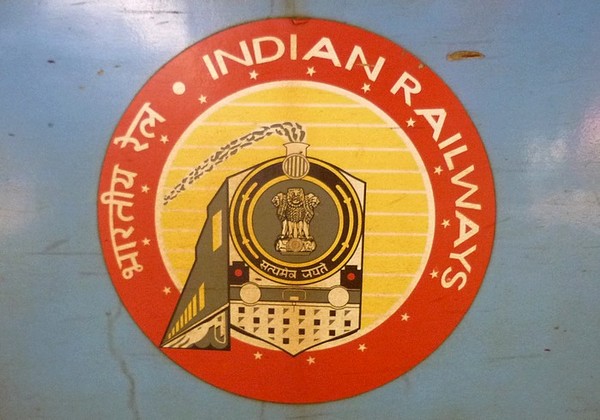
Travelling on Indian Railways is a delight for the British visitor. We were responsible for setting up most of the lines so they have a very British and familiar feel about them.
As some of you will know, I spent a short holiday in India in October 2006. What a fantastic country! At that time we visited four states - Delhi (DL registrations), Haryana (HR), Uttar Pradesh (UP) and Rajasthan (RJ). On my return I created three pages illustrating the transport delights that I saw.
Then, in 2014, I went back again, but this time to West Bengal (WB registrations), starting from Kolkata (Calcutta) and travelling about 250 miles north up into the real rural India, close to the Bangladeshi border and following the Hooghly River, a branch of the mighty Ganges. It was a fabulous trip with lots of new things to see, and I've divided my pictures into five sections, as per the above list:
In West Bengal the local train service is supplied by the Eastern Railway, one of the smallest of the seventeen zones in the Indian Railways system, and which was incorporated in 1845. It is based in Calcutta. Here are some views of the E. R.

Just pulling into Prinsep Ghat station right on the bank of the Hooghly river in the centre of Calcutta is local electric multiple unit no. 13146. It's running on the local suburban service into Sealdah station.
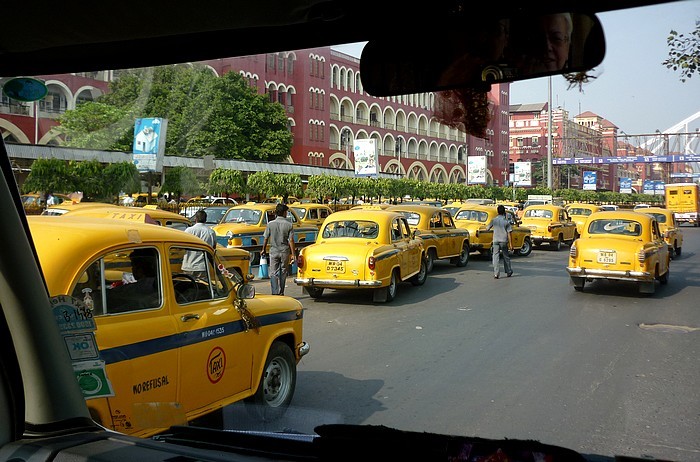
This is the mighty Howrah station on the west bank of the river Hooghly, headquarters of the Eastern Railway and the South Eastern Railway. It is the oldest station in India (opened in 1854) and is now the largest railway complex in the country and has the highest train-handling capability. The present building was constructed in 1905 and has 23 platforms. As you can see, all of the vast army of Calcutta taxis are yellow Hindustan Ambassadors.
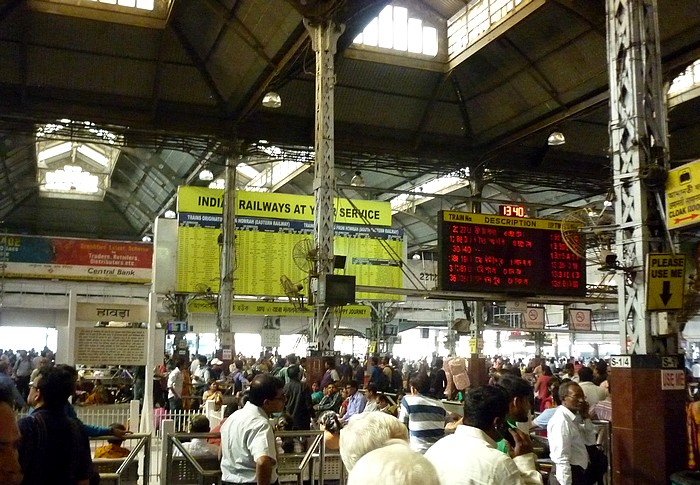
Here is a view inside the city that is Howrah Junction railway station. It's an insane, deafening, bustling ants-nest of a place. It's a miracle that we didn't get lost or trampled in the mayhem.

This is a closer look at the departures board, for the Eastern Railway, South Eastern Railway, terminating trains and through trains. Of course, not everything runs entirely to plan - pretty much like Britain really.
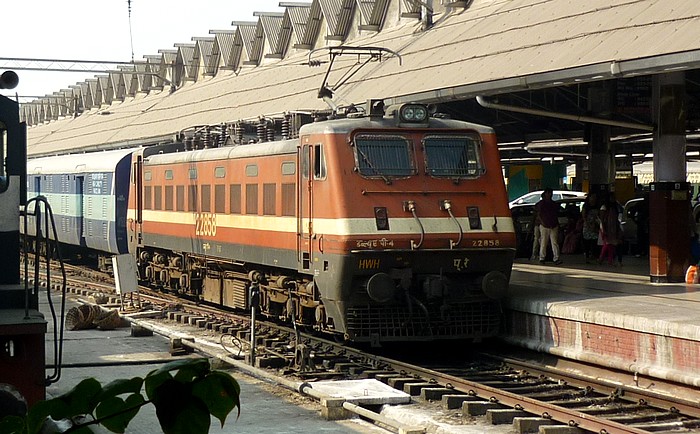
This is a WAP-4 electric loco - W=Wide (Broad gauge), A=AC (AC Electric only), P=Passenger. It is powered by a Hitachi motor and is designed to haul 24-26 coach trains.
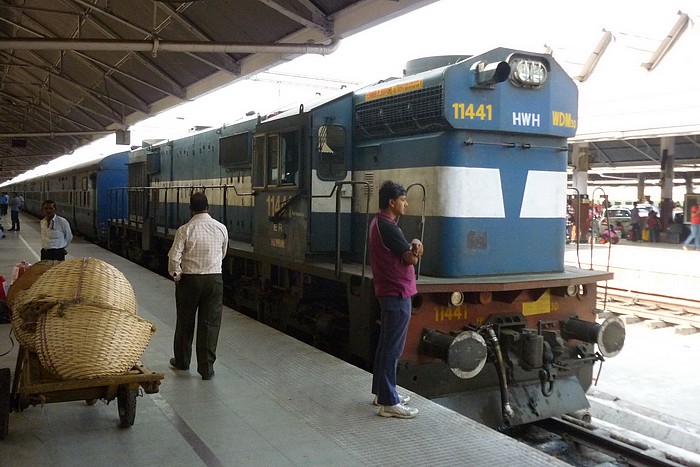
This loco is a Class WDM-3D. W=Wide (Broad gauge), D=Diesel, M=Mixed traffic. It is a high-power 3000 h. p. loco and weighs 117 tons.

As you can see in this additional view of the WDM-3D, no. 11441 is Howrah-based, appears to have plenty of room in the cab, and is a micro processor loco, whatever that means.
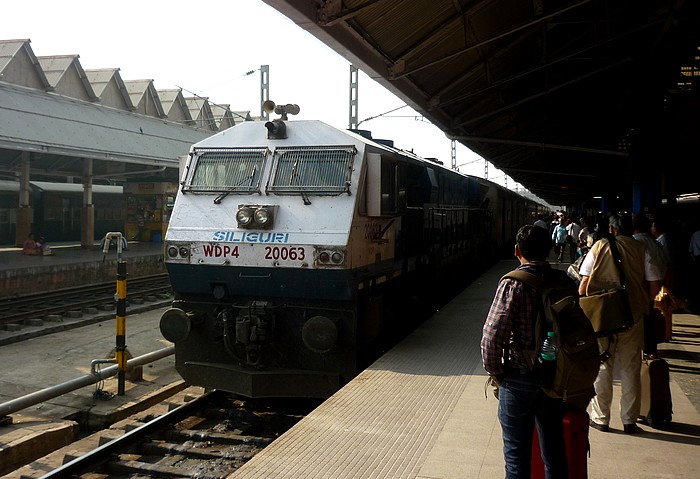
We were at Howrah Station to catch the Howra - New Jalpaiguri Shatabdi Express as far as New Farakka, a journey of about 5 hours. The service was inaugurated in 2012, and the ten Linke Hoffmann Busch coaches (LHB, the most modern coaches in India) are hauled by WDP4 or WDP4B Class diesel locos based at Siliguri loco shed. They are diesel because the northern end of the line has not yet been electrified. It is the 2nd fastest diesel train in the country, after the Puna Shatabdi Express. Here we see WDP-4 no. 20063 arriving with the inbound express. W=Wide (Broad gauge), D=Diesel, P=Passenger, and the 16-cylinder 4000 h. p. loco is manufactured by a Caterpillar Inc. subsidiary.

Displayed on the approach road to Howrah station is this 0-6-4 tank engine AK-6 (although some believe it to be AK-9), so named because it used to run between Ahmedpur and Katwa. Built in 1919 by W. G. Bagnall of Stafford for the McLeod Light Railway it is of 2ft 6in gauge and later operated for the East Indian Railway (forerunner of the Eastern Railway).

Finally a handful of images that don't fit into the previous categories. Just in case anyone tells you that the old Hindustan Ambassador is a dying breed - not in West Bengal it isn't, as this car park near Malda confirms.
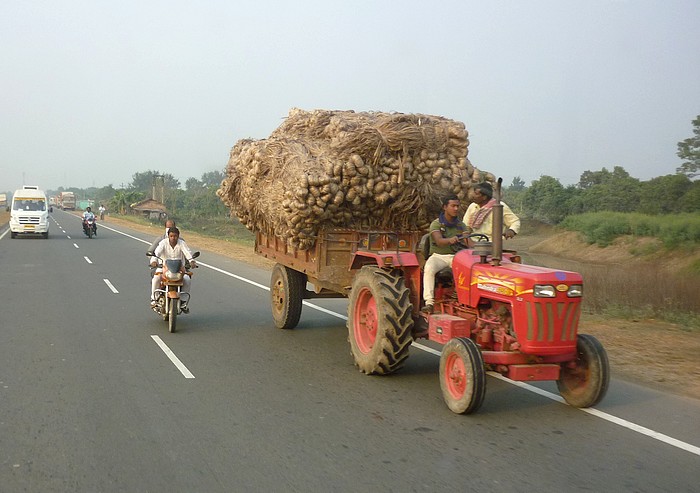
Further down the road I saw this Mahindra tractor pulling a load of I don't know what. Any ideas?

Finally this is a bunch of Customs vessels moored up in the Hooghly river in central Calcutta. Presumably they are for protecting the border with Bangladesh. That's it folks.
POSTSCRIPT
In July 2015 Nick Fitzgerald sent me a couple of glorious pictures he took at a heritage car rally in Chennai in 2014. The two Hindustan cars are rare beasts and I'm delighted to publish the photos.
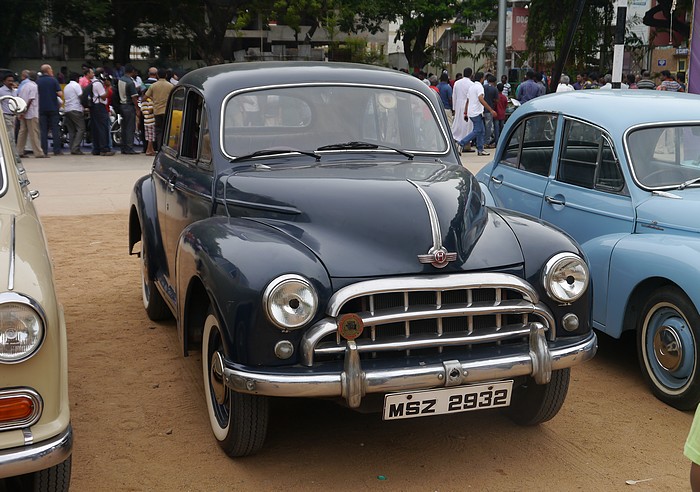
Above is a Hindustan 14 from 1950, and it was the predecessor of the Ambassador. It's a rebadged Morris Oxford.

The car above looks like a Morris 1000 but the badges say it's a Baby Hindustan from 1958. Thanks very much to Nick for letting me use these images.
Email Events diary Past events list Classified adverts Classic U.K. Buses Classic Irish Buses Classic Manx Buses